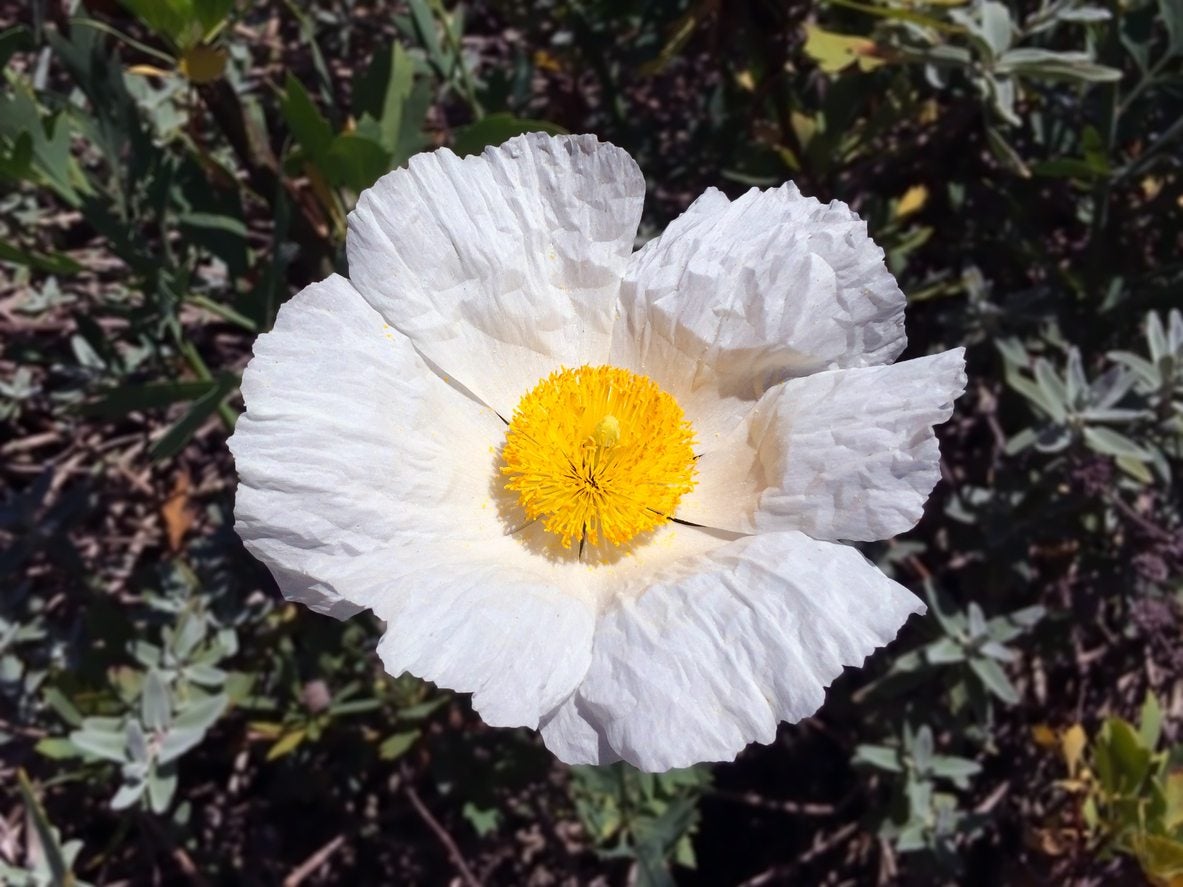Matilija Poppy Care: Tips On Growing Matilija Poppy Plants


The Matilija poppy (Romneya coulteri) is also frequently called the fried egg poppy, just one look at it will tell you why. The flowers are 6 to 8 inches (15-20 cm.) across with five to six petals. The petals are wide, pure white, and look to be made of delicate crepe paper. The stamens in the center form a perfect circle of vivid yellow. The plant came very close to being named the state flower of California, narrowly losing to the California poppy. Keep reading to learn more about how to grow Matilija poppies.
Matilija Poppy Planting
Matilija poppy plants are native to California and are, therefore, a good choice if you’re looking for a local flower that can weather a drought or two. That being said, Matilija poppies are far from a sure thing in the garden. They are famous for being both hard to grow and invasive, and care of Matilija poppies can be tricky to figure out at first. They need full sun and prefer well-draining soil, but they will tolerate some clay. It’s hard to know just what a Matilija poppy will deem a suitable spot, but once it finds a place it likes, it will take hold. It is because of this that Matilija poppy planting should be reserved for large gardens where they’ll have room to spread out. Due to their extensive root system, they’re good at preventing soil erosion and are ideal on a sunny bank prone to runoff.
How to Grow Matilija Poppies
Matilija poppy plants do not transplant well from one spot to another. The best way to add them to your garden is to start with a small plant in a nursery pot that’s no bigger than a gallon. Dig a hole as deep as the pot and twice as wide. Fill it with water and let it drain. Water the plant in its pot as well. Carefully cut the pot away (as roots are delicate and may not survive being pulled out of the pot) and plant it in its new home. Water your new plant at least once per week while it’s getting established. Matilija poppy plants spread by rhizomes, so bury some sheets of metal around the plant to help contain its takeover of your garden.
Gardening tips, videos, info and more delivered right to your inbox!
Sign up for the Gardening Know How newsletter today and receive a free copy of our e-book "How to Grow Delicious Tomatoes".

The only child of a horticulturist and an English teacher, Liz Baessler was destined to become a gardening editor. She has been with Gardening Know how since 2015, and a Senior Editor since 2020. She holds a BA in English from Brandeis University and an MA in English from the University of Geneva, Switzerland. After years of gardening in containers and community garden plots, she finally has a backyard of her own, which she is systematically filling with vegetables and flowers.
-
 Grow ‘Karl Rosenfield’ Peony Plants For The Ultimate Frilly Border Beauties And Cut Flowers
Grow ‘Karl Rosenfield’ Peony Plants For The Ultimate Frilly Border Beauties And Cut FlowersFor frilly double magenta peony petals infused with a heady fragrance, grow ‘Karl Rosenfield’ peony plants. Here’s how to cultivate the ultimate plushy blooms
By Tonya Barnett
-
 10 Common Composting Problems That Can Spoil Your Garden Gold – Plus Easy Fixes
10 Common Composting Problems That Can Spoil Your Garden Gold – Plus Easy FixesLearn how to troubleshoot common composting issues before they ruin your stash – from bad smells and bugs to materials not breaking down as they should.
By Susan Albert